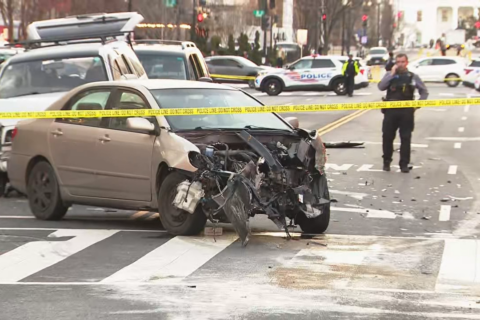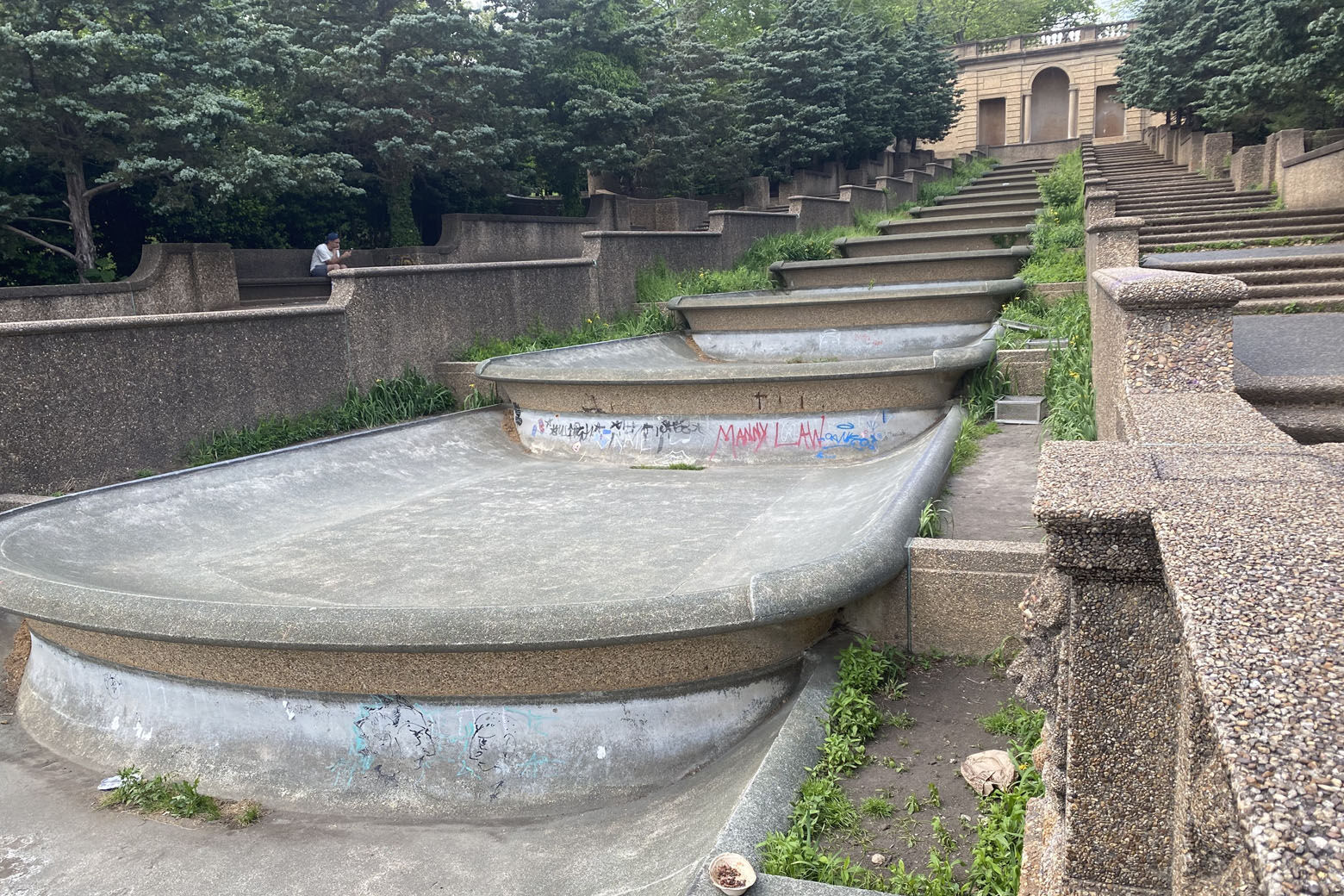
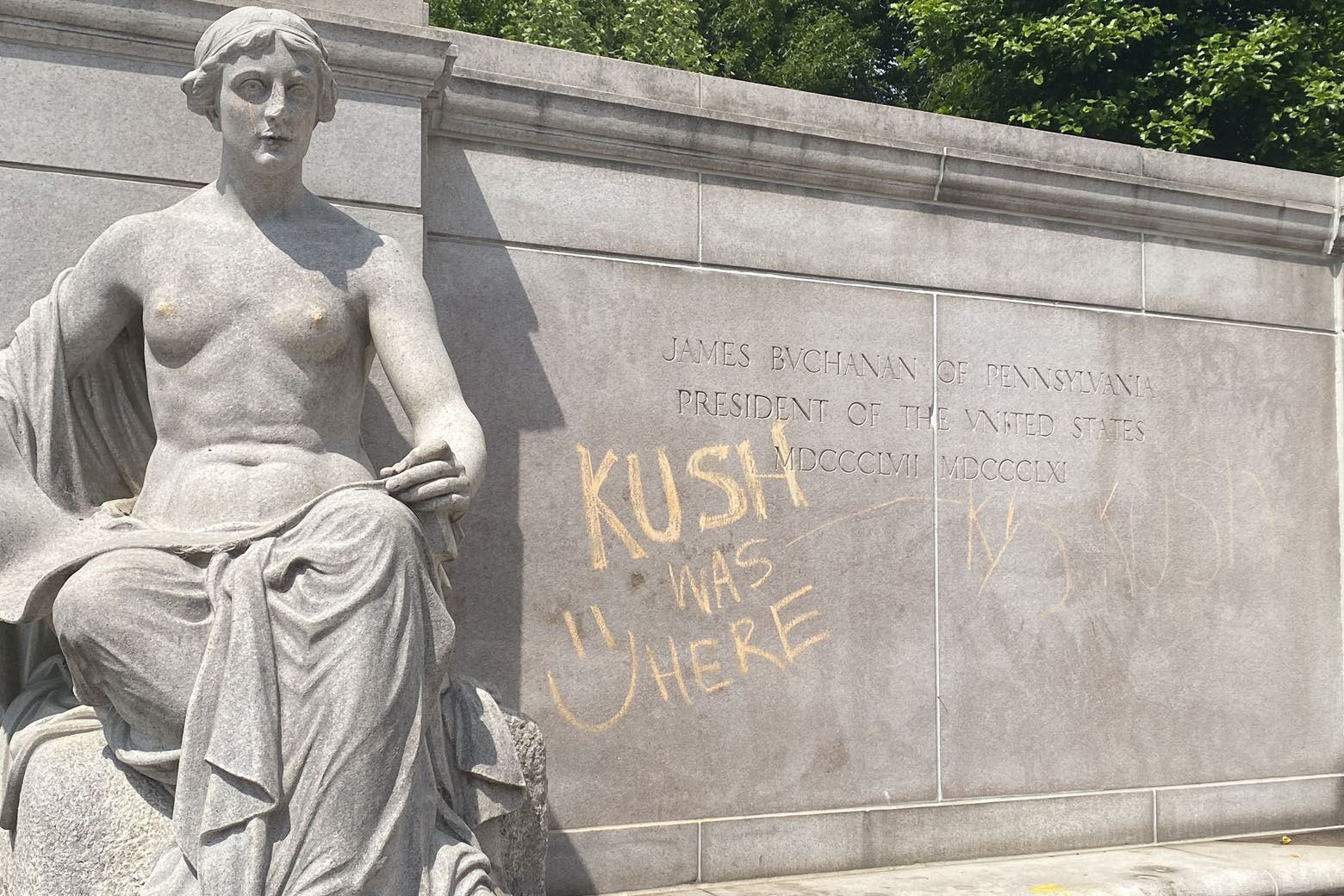
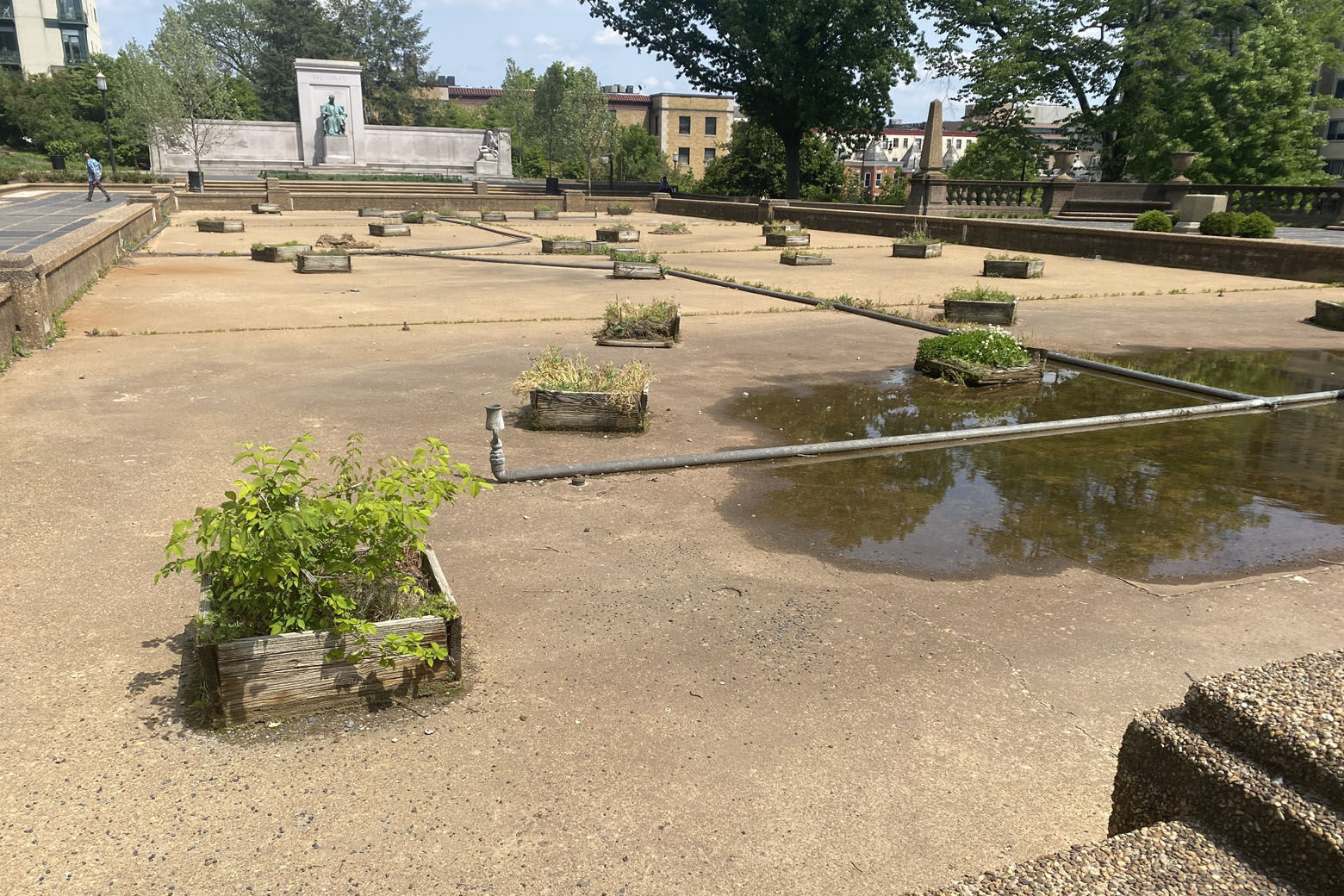
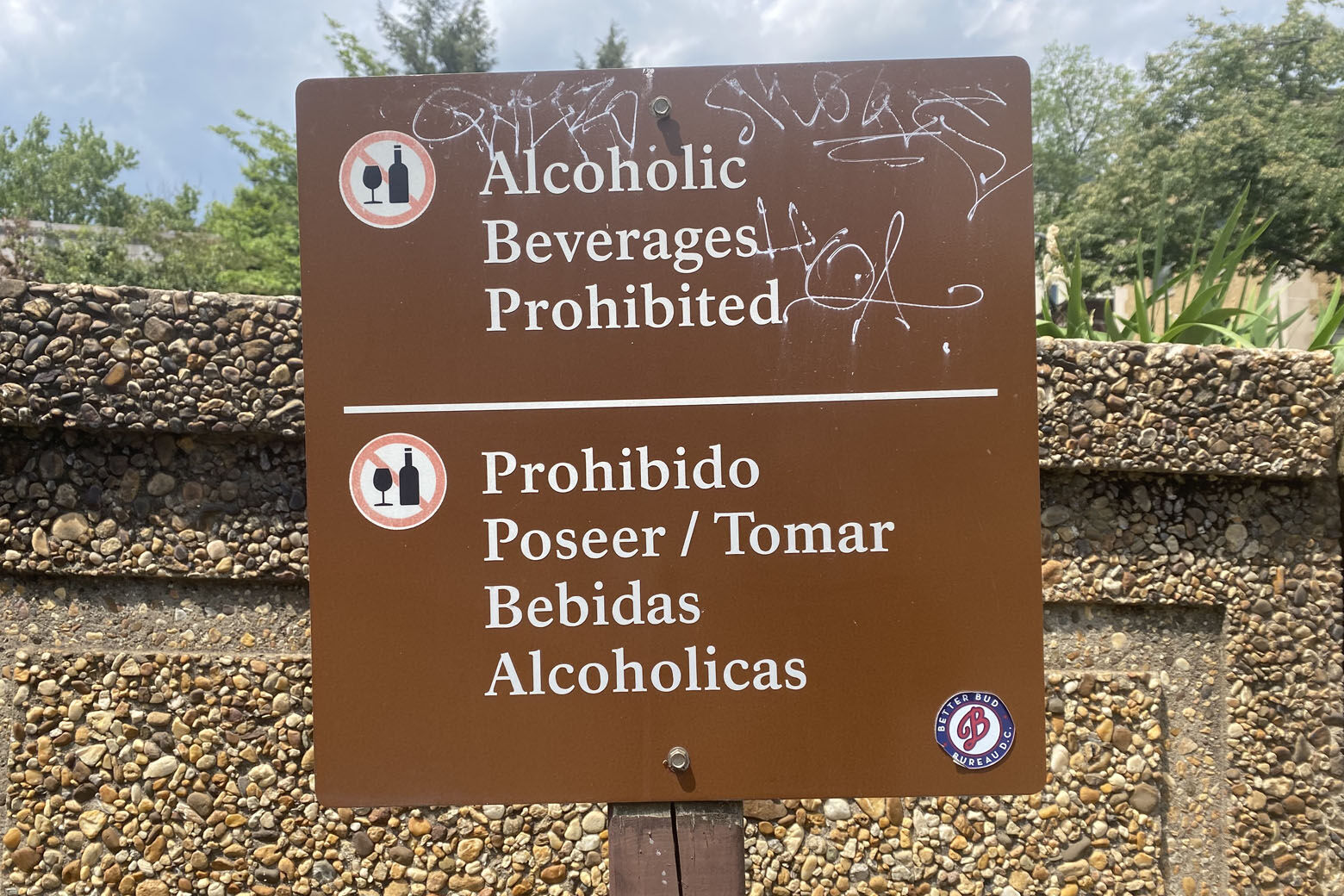
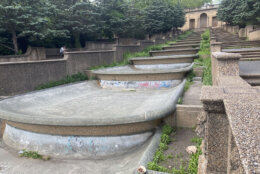

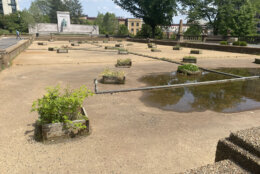
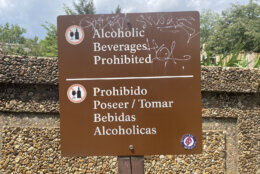
In recent years, the Trust for Public Land has consistently ranked D.C. as having one of, if not the best park systems of any city in the country. And some of the District’s parkland is world renowned, such as the National Mall and the White House grounds.
But all told, the National Park Service controls hundreds of “parks,” totaling about 6,500 acres around the city — some as small as a street corner. And for all the love and attention some of the bigger parks get, a report out from the Redstone Global Center for Prevention and Wellness at the George Washington University Milken Institute School of Public Health found too many of those smaller, neighborhood parks aren’t getting enough attention.
“That ranking is based on the fact that we have a lot of green space, that we devote a lot of financial resources toward that green space, and the vast majority of Washingtonians live within a 10 minute walk of a park,” said Rachel Clark, the policy director at the Redstone Center.
But she argued that a litany of different administrative units within NPS means the total amount of funding allocated toward parks around D.C. isn’t shared equally.
“It’s understandable that [the National Mall] is where NPS puts a lot of its resources, because those are the parks that are most central to its mission,” Clark said. “They have enormous national significance and a lot of the sites have historic significance. That fits right into their priorities.”
But other federally maintained land in the city, such as Meridian Hill Park in Northwest, is speckled with graffiti on sculptures and fountains that weren’t turned on.
“This is supposed to be a historic landmark because of the waterfall here,” said a parkgoer named Ian.
“That’s the skate park now,” said Shoab Sargeant, while sitting on one of the benches there. “It’s been off for so long that the skaters go.”
Clark said those kind of stories, and the mountain of tires discovered in Anacostia Park over the winter, are indicative of bureaucratic red tape and the lack of resources that neighborhood parks in the city get.
“The District could benefit enormously if some of the parks that are less central to NPS’ mission were more under the District’s control,” Clark said. “If the District could exercise more control over those more neighborhood facing parks then they could use those parks more to meet community needs and also they could use District resources to improve them or activate them.”
In fact, more city control, or at least more cooperation between city and federal park agencies, is just one of several recommendations made in the report.
For D.C., the report suggests:
- Establishing an office in the city’s Department of Parks and Rec that focuses on the city’s interest in NPS land
- Establish a parks advisory board encompassing numerous relevant agencies
- Establish an equity conservancy to help parks in economically disadvantaged areas get resources parks in wealthier neighborhoods get
The report recommends D.C. and NPS together:
- Come up with a plan for future management of federally owned land, and identify park land where sharing of responsibility makes sense, and where giving control to the city might make sense, too
- Improve information sharing
- Coordinate responses to service requests when a problem arises
- Come up with one, single online permitting system when people want to reserve facilities
Recommendations for NPS specifically:
- Simplify permitting
- Narrow down from six different administrative boundaries to two: one for tourist-focused parklands, and one aimed at parks that serve mostly city residents
- Increase community engagement
- Prioritize local use, not preservation
Recommendations for Congress:
- Give local ownership of parks to D.C.
- Establish an Urban Parks division that could better prioritize parkland in city neighborhoods
- Increase funding for NPS
For its part, a statement from the National Park Service said “at first glance the report offers sound ideas to consider, and an interesting, but incomplete, perspective on park management in the District of Columbia.
“We are proud to care for DC’s neighborhood national parks and know that DC residents visit and enjoy their parks every day for fun, better health and overall wellness. Our regular collaboration with the District of Columbia government, Business Improvement Districts (BIDs), partners and community stakeholders is essential to this work.
“We encourage residents who have questions, concerns or ideas regarding local national parks to contact to us through the interactive map on www.nps.gov/dcparks.”
One city resident who advocates for open spaces east of the river said he sympathizes with what NPS has to deal with.
“I think the National Park Service does the best it can with not enough resources,” said Nathan Harrington, who is with Ward 8 Woods Conservancy. “The colleagues with NPS that I’ve worked for, I have a ton of respect for. I think that there’s not enough of them. They’re sort of set up to fail.”
Harrington called it another reflection of the “home rule” situation people around D.C. have complained about for decades.
“I think D.C. government is, if nothing else, a little bit more nimble, more representative of residents, and more likely to respond to the concerns and desires of residents,” he added. But he later admitted one bright side of the current situation is that it prevents the city from giving away any of that land for development.
“If land is transferred to D.C., park advocates are going to have to be really vigilant to make sure that it remains park land and isn’t sacrificed for development,” he said.



